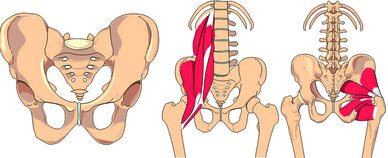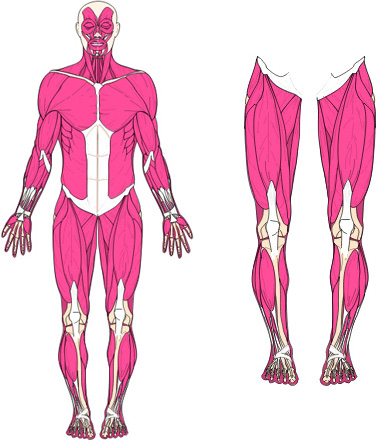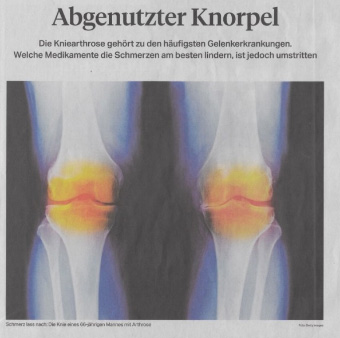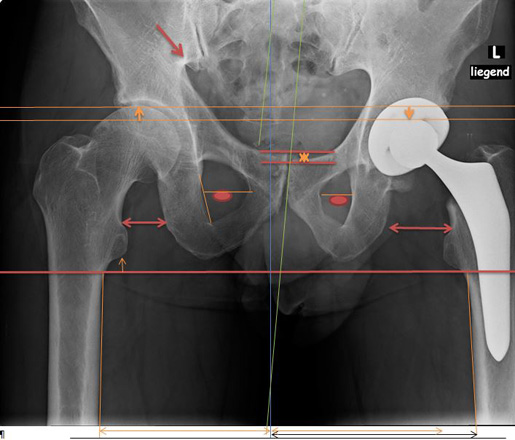The S 400 whole-body static measuring system was developed over years of research.
This shows the body's statics, or rather the misstatics, always through the same standing posture under muscle tension.
All deviations take place over the static body centerline. Only in this way can lateral and height deviations, rotations, leg positions, with knee blockages and incorrect loading of the foot and foot positions be seen and measured in context.
These measurement data with the visible body language support the search for the causes, which thus influence treatment. This makes it easier to carry out targeted applications and demonstrate progress in a reproducible way.
Aetiology deals with the causes of complaints and diseases.
(According to MSD Manual 5th editi on Urban & Schwarzberg) The cause of osteoarthriti s is unknown.Unfortunately, for over 100 years, leg length discrepancies in the unloaded state have been measured and also illustrated in this way, without knowledge of the 9 different deviation postures from the body-static midline.As a result, these deviations of false statics (angular displacements, rotation, height deviations, leg position changes) are measured as leg length discrepancies, which are effectively non-existent in over 99%.
With the help of the Styfologie® whole-body statics measurement, the statics problem can be seen, measured and treated. For example, in approximately 5 minutes, our therapy mat can show whether an apparent shortening of the legs is really only a pelvic depression.
The research builds on the consequences of mis-statics. The same goes for medicine / biomechanics / psychological influences that result in negative thoughts and felt in the gut.
The muscles need the bone levers to transmit power.
If tension and counter-tension are not in balance, the skeleton distorts. This changes bone and joint positions, which leads to one-sided overloading and can be regarded as arthrosis.
These faulty tension lines cause over compensation pain, circulatory and lymphatic system disorders. The tension lines also lead to internal pressure on organs, organ connections, which in turn can cause various complaints.
How can the statics of the body be recognized from body part images of the causes that lead to bone, joint, vertebral body and intervertebral disc changes?
How can the causative muscle mis-tension lines be identified in this way? The body statics measurement shows many things about the statics in context (faulty statics / law of leverage / musculature / tendons) which lead to complaints via distorted postures.
In the case of the imaging, no one knows how these faulty statics came about and what pain the person can avoid by adopting a relieving posture.
A body changes through comfortable lying by relieving the leg/knee axis and head support and thus the body tension also changes.
What posture was depicted in the pictures?
Why is the measurement recording data from the static body center line missing so that an image can be interpreted correctly?
Body images taken in a relieving posture make complaints visible without taking their causes into account.
Despite optimal image quality and high-resolution images, the causes of the complaints are not made more
visible in this way, because a change in muscle tension also results in a changed image.
With the help of some X-rays / MRI images etc.. Let's show this. Images Getty / Getty Image

3. Due to the pelvic obliquity and the one-
sided upper body tension, the pelvis also
moves sideways. This change in leg positi on is
oft en countered by turning the leg-foot axis
outwards or with a bent foot. In this way, the
one-sided steeper angle of the changed hip-
ball transmission is counteracted.

4. Basin Comparison with an
isosceles triangle.
If the lower line of the triangle moves
sideways, it changes the leg positi ons. One side
becomes steeper, the angle becomes smaller
on the other. Although the lengths are
unchanged, there is an opti cal and apparent
diff erence in length. Only in the case of the
pelvis does this have an even greater eff ect via
the neck of the thigh as a translati on.

| This lateral displacement has the eff ect that the thigh with the increased angle to the pelvis presses inwards. The opposite side pushes the hip ball upwards due to the smaller angle. This is oft en counteracted by turning the foot outwards. | Leg positi on change |
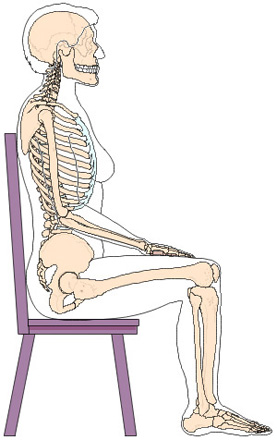
(Kopie 1)
| 5. that we are sitting on the pelvic tuberositi es. If it were the so-called leg length differences, the pelvic crests would have to be measured across the static centre line, balanced. Unfortunately, this is not the case. With our Pat. static measuring system we can show this in our showroom via the stati c measurement. | 6. In over 99% of the so-called leg length differences, it is a matter of muscle misalignment (muscle blockages). With our therapy mat it can be shown in approx. 5 minutes whether it is a tension-related deviation (approx. 99%) or whether it is an effective shortening (approx. 1%). Also a lasting measurable We can show compensation. This takes about 2 hours. Longest follow-up measurement after 23 years |


| 1.2 Would you want to correct the pelvic low and the compensatory postures of the upper body by supporti ng the feet from below at the end of a chain of incorrect loading? | 2. So if at the end of the misloads the eff ects of the track were found in the tyres, would the tyres then have to be doubled up in the shape of a wedge, as is the case with humans? So that the track is aligned via the counterpressure. With what consequences? |
In humans, foot load plates for insoles are recorded with a computer. How are the incorrect loads calculated starting from the pelvic low, the lateral
How do you take into account the shifting of the hips, the upper-body posture, which leads to changes in the leg and foot position?
If the pelvis is not horizontally and vertically perpendicular, these faulty forces with the evasive postures will also become noticeable in the movement.
Treadmill analyses: What cause-related information can these give about an inclined pelvic plane?
Car: If the tyre of a car has a puncture, is the driving behaviour checked?
In humans, a low pelvis has the same effect as a flat foot in a car. Depending on the tension deviation, this also has a corresponding effect on the dynamics.
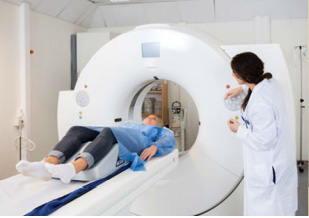
What can such a recording reveal without muscle tension?
Hip joint and spine positi ons change via the knee relief.
How can a change in positi on, e.g. a one-sided knee blockage, or a change in the positi on of the leg angle in relati on to the pelvis, an inclined pelvic plane, be determined, which can possibly cause joint or back problems. The positi on of the spine also changes.
How are hollow and fl at backs assessed in connecti on with this?

Knee support for relief Foot positi ons change joint positi on in the pelvis Head support changes upper body tension.
A body without load probably represents a visually accurate image, but cannot provide informati on about a mal- loaded body.
The following questi ons are also missing:
Have anxiety, receive anxiety informati on Stress at work, family, road traffi c, about long waiti ng in waiti ng room Are you in pain.
All these components can have diff erent trigger muscle tension and distort an image.
The body statics measurement simply shows many things in context.
Via statics / law of leverage / musculature / tendons and ligaments / the skeletal evasive postures are precisely and reproducibly shown, which lead to complaints via the incorrect loads.
Why is this statics information missing from imaging snapshots?
Can a skeleton move independently?
Who is responsible for the movement and cohesion?
What can a skeletal image show regarding osteoarthritis?
How can the causes of the malpositions be identified and treated? How can the causes be identified from partial areas in a relaxed lying position? etc.?
Body images taken in a relieving posture make complaints visible without taking their causes into account.
Despite optimal image quality and high-resolution images, the causes of the complaints are not made more visible in this way, because a change in muscle tension also results in a changed image.
In the appendix we show this with some X-ray / MRI images.
This is how complaints arise where changes become visible without revealing the reason for them.
Knowing that no skeleton can move on its own. The muscles, tendons and ligaments are responsible for the cohesion of the bones, joints, vertebrae and movement.
Upper body lateral evasive posture leads to overloading of the inner side of the knee via the leverage effect (consequence arthrosis is detected?)
Picture shows a twist of the left side, based on the pelvic lithographs.
In addition, the pelvis must be shifted sideways.
Visible from the leg positions and the twisting of the femoral neck.
It is also evident that the pelvis is ticking up on the left.
The pelvic gap clearly shows that the upper body moves to the left and thus distorts the pelvis in height.
Also, above the pin ball on the right, it pushes the pelvis up above the pull of the lateral upper body posture and distorts the pelvis.
1.2
1.6
Hoof made visible with strokes arrows circles
Upper body evades despite hoof joint replacement blue inset lines. The pelvic depression is also visible on the asis of the folds of the buttocks.
Above the green line you can see how the right side is bent.
On the left side, the 0expansion stress becomes visible.
If whole-body statics measurement were used, the diagnosis would quickly and accurately show the evasive postures.
If whole-body static measurement was used in the imaging procedures, misdiagnosis could be prevented. This would reveal the cause of the skeletal deviation postures as the cause of the muscular dysfunctions.
1.7
Despite this, the other hip joint was also replaced.
Despite this, the other hip joint was also replaced.
Despite operations, the pain has remained.
If one observes the pelvis and the joint positions, one now sees a twisting of the pelvic hole on the right side.
The pelvic gap is still raised. Due to the twisting, the left side is now squeezing.
One has shifted the burden.
During the statics check, the pelvic depression and the associated lateral upper body deviation posture were not taken into account.
1.8
DICOM-30
If whole-body statics measurement were used in imaging procedures, misdiagnoses could be prevented and many costs could also be saved. This would reveal the cause of the skeletal deviation postures as the cause of the muscular dysfunctions.
In order to also reveal the cause of the complaints, the installation of whole-body statics and the law of leverage is needed so that whole-body statics can also be reproducibly taken into account.
The advantages
- simplifies the diagnosis:
all relationships in the whole-body statics are shown - reproducible measurement data:
Evasive stops and their course are documented simply and clearly - Treatment safety:
Outliers of the problems become visible through the avoidance posture and can be treated specifically. - improved quality of treatment:
In addition to the body problem that has arisen (effect), the cause of the complaint is also recognised via the laws of leverage. Through the exact recognition of the faulty tensions, these can be included in a therapy and thus enable a faster healing success. - fewer misdiagnoses:
<By taking into account the whole-body statics and recognising the faulty statics, it is possible to determine the exact cause.
The cause of a complaint is often muscle misalignment lines that lead to hyperextension pain. These deviating postures are measured as faulty statics.
This in turn leads to localised overloads and will then lead to wear and tear, deposits on joints and vertebrae. This is then illustrated, for example, as arthrosis or a slipped disc.
Unfortunately, it is not possible to identify the causes of the stress deficiencies in this way.
If these lines are solved, the body can be returned to its ideal posture. Balanced stress can prevent many body problems. But not only that, stress balance is the cause of many tension-related body problems.
With the help of whole-body statics and the law of leverage, the cause of the complaints can also be determined via the transverse forces that arise. For this, fixed stop slides were necessary for a reference-based body recording.
We also had a solution for this.
Short summary
Skeleton
The skeleton consists of individual bones, joints, vertebral bodies and is held together and moved by ligaments, tendons and muscles. (approx. 206 bones in the adult) Musculature / tendons and ligaments Muscles, tendons and ligaments are responsible for the movement and cohesion of the skeleton. The muscles need the bones for power transmission. (a healthy person has approx. 656 muscles).
Statics
Statics describes, among other things, <let the forces at rest be balanced, otherwise it distorts, compresses or twists the body.
Leverage law
According to the law of leverage, for example, 100 kg can be held in equilibrium with 5 kg, depending on the length of the lever. This also makes it clear how differences in tension distort the skeleton.
These one-sided forces
They are responsible for the evasive and compensatory postures. These in turn change skeletal positions via bones, joints and vertebrae.
Complaints
In many cases, problems with the skeleton are not caused by the skeleton. The fact is that without ligaments, tendons and muscles the skeleton collapses. Thus, the skeleton with its bones, joints and vertebrae is elastic.
Because muscle/tendon attachments for optimal power transmission are often located near joints and vertebrae, muscle/tendon overstretching is often perceived as joint or back pain. The sum of the incorrect tensions and their
evasive postures automatically lead to stress, blood circulation and functional disorders, which can affect both the skeleton and the musculature lines and thus also internal organs and organ connections.
The pelvic depression is not to be confused with the 9 evasive postures and 46 possible combinations that lead to similar oblique postures, but also to different longitudinal deviations.
Leg-length differences
Gibt es diese wirklich?
Do they really exist?
According to the structural survey, these effective leg-length deviations are less than one per cent and yet the dodges are still treated as such.
If these were real differences in leg length, they would have to be compensated for when sitting in the static midline over the iliac crest, since one sits on the pelvic stools. Unfortunately, this is not the case according to our measurement method. In addition, we can show within about five minutes whether this pelvic obliquity can be corrected in the long term. The most recent follow-up measurement was taken after about 23 years and was still balanced.
In summary, the skeleton consists of three parts, the pelvis in the middle plane, the upper body on top of it and the legs with the pelvis attached to the legs. A tilted pelvic plane automatically changes the posture of the upper body. These incorrect forces in turn affect the pelvis and thus also the leg and foot positions, which transfer these incorrect loads to the floor.
Instead of pelvic balancing, the treatment focuses on ribbing pain, hip complaints and misalignments of the legs and feet at the end of a chain of incorrect stresses. The tension lines lead to one-sided joint loads and are then described and illustrated as arthrosis.
Imaging techniques
Another issue is the imaging procedures, which have no statically relevant data and are therefore not reproducible.
Let's take the example of lying down. In this case, the body transfers the tension along the entire length of the body to the couch. Without pointing out what kind of evasive postures are involved in these recordings and with what kind of tension they were recorded. Often a relaxation is induced by placing the knees and head underneath to relieve the tension, which further alters a recording. Only a laterally turned out leg-foot position changes the stress on the hip joint, which can be tested by placing the hand at the side of the hip joint and turning the foot position parallel outwards. How can a reclining, relaxed photo of a body of 180 cm provide information when the same person in a standing position has to transfer the effects of this misalignment to the floor over approx. 30 cm and, in addition, has to maintain/tension the upright posture in balance?
Science, Biomechanics, Skeletal Radiology, Rontgen Images What information should a picture provide?
Science / Hypotheses
The evaluation of assumptions and the discovery of new knowledge (also called science and research!) take place in cycles.
Observations allow the definition and description of problems; analysis then leads to a hypothesis or theory through
abstraction of essential elements".
This, in turn, allows for the prediction of new events and knowledge to be verified, etc."

(---) (Science: According to GK2 medical biometry /Thieme Verlag) (11)
Specialists in all fields can confirm that a not inconsiderable proportion of the results described in the scientific
literature are not reproducible or can be seen as a constant repetition of artefacts.
In today's world, scientists around the world are under more pressure than ever to succeed."
Nevertheless, the theoretical prerequisites are correct" - because it is true:
Hypotheses can only be claimed, never proven!

How can this method of measurement take into account the different avoidance postures that lead to different length
deviations?
Styfology ® shows 9 alternative postures to the right and to the left side. These result in 46 possible
combinations. Can this be determined by the naked eye?
How can you put such a person in the position to be compared 2 times before and after treatments?
What can movement restrictions show?
These are muscle blockages.
These thus protect the punctual upper loads on joints and vertebral bodies.
The restriction of movement is induced by the muscle tension to protect the punctual overloads of joints and vertebral bodies.
Science 24.11.10.Spektrum der Wissenschaft Spezial p.l p.9 p.12. p.23.
If man were intelligent enough to know all the laws of the world, he could determine at any moment the state of all its constituents",
(so Laplace) Author Francois Pepin teaches philosophy at the Uni. Nanterre-Paris Ouest.
Probability
How do we establish that probability is the possibility of the event occurring - not the effect of our ignorance?
Report Thierry Martin Professor of History and Philosophy Uni. Franche-Comte in Bearn;on (France)
1st chance - which somehow lies behind every probability statement - a property of the world or an expression of our inadequate knowledge of it?
"p.1 Christoph Poppe Editor of this issue
This is how the confirmation relation between data and hypotheses tries to be expressed in probabilistic terms.
In general, within the framework of Bayesian theory, a known fact can never confirm a theory - in
contrast to the way theories are constructed and supported in practice".
Mikael Carzic University lecturer Paris 12 and researcher at the lnstitut d'historie et de philosophie des scientes et des techniques (Parisl-ENS-CNRS) Isabellle Druoet Postdoc. Fonds national de la recherche sciences et at the Catholic University of Lowen (Belgium)
Biometric features for personal authentication (e.g. fingerprint)
Every person is unique. But which characteristic is best suited to recognise him beyond doubt? Obvious characteristics such as hair colour, eye colour, signature and voice are relatively easy to change.
The fingerprint is different: when it was proven more than 150 years ago that two people's fingerprints are never exactly the same, criminologists had a single, accurate characteristic at their fingertips that was difficult to fake.
Criminals are still identified in this way today, and fingerprints are also popular in Passen."
For biometric passports, the line patterns of the fingertips (usually those of the two index fingers) are now captured with optical scanners and then stored as an image.
,,,, To check whether the passport holder is identical with the person presenting the passport, the patterns of grooves and lines on the fingertip are compared with a computer programme. Most important are the position and
anatomy of the so-called minutiae, the forks and ends of the lines. Contain two fingerprints a certain number of matching minutiae, they are considered to come from the same finger. So the software - like any biometric system - only ever gives the probability of a match."
How can reproducible statistics be produced without comparable whole-body static measurement values?
These unilateral forces are responsible for the evasive and compensatory postures. These thereby change the skeletal positions via bones, joints and vertebral bodies.
The body then reacts at some point with complaints in the area that has been overloaded by the constantly acting false statics.
When taking pictures, people often adopt spontaneous postures and lying down by relieving themselves, e.g. by putting their knees and/or head underneath.
Without tension, however, the images change.
A one-sided knee extension deficit, the leg angle to the pelvis, hip joints and vertebral body positions change.
However, these do not correspond to the stressed body. This makes targeted intervention very difficult. Tension and overstretching change the flow of blood. This means that not enough nutrients can be supplied and not enough can be removed. This leads to deposits in the tissues and joints.
"Thoshiba 9Year 6 2004"
"Muscle contraction over a long period of time leads to a constriction of the blood vessels around the muscles, which gradually reduces the blood flow. According to measurements, handling the ultrasound probe requires an average effort of 2 kg - which is an enormous effort over a longer period of time. (Habes et al. 1999)
More nutrients are consumed than can be delivered and deposits can occur around the muscles."
Innovation12.5.2018 Zürichsee-Zeitung Obersee Artificial intelligence- a helper and not a monster Person Katharina Luban Professor of Logistics and Supply Chain Management at the University of Applied Sciences Rapperswil (HSR) otm "If you wanted to calculate gravitational laws on planets with a computer, you would need a lot of computer power."
But once Newton was sitting under a tree and an apple fell on his head. All of a sudden it was relatively easy to put this into a formula."
"Believe that the workings of the brain can't be so complicated that you need more and more computer power to explain something."
There must be simpler solutions. It's worth thinking about."
Are algorithms that play chess brilliantly intelligent?"
No, for me intelligence is already a step further. These examples are simply cleverly applied computing power, I would say."
"You can't teach an algorithm if you don't have sample data.
He can only learn what is put in front of him, but not think the next step."
It can certainly do many things much faster than humans, and there are applications that are very suitable for it.
But real intelligence means creating something new. And that doesn't exist yet."
Does intelligence include other human attributes such as empathy or emotions, or can intelligence function without them? "No"
How can three-dimensional images be taken without standing or lying down requirements (fixations), without capturing the false static effects via the body static centre line with measurement data. Algorithms need sample data. But how can comparative data be generated via uniqueness?




